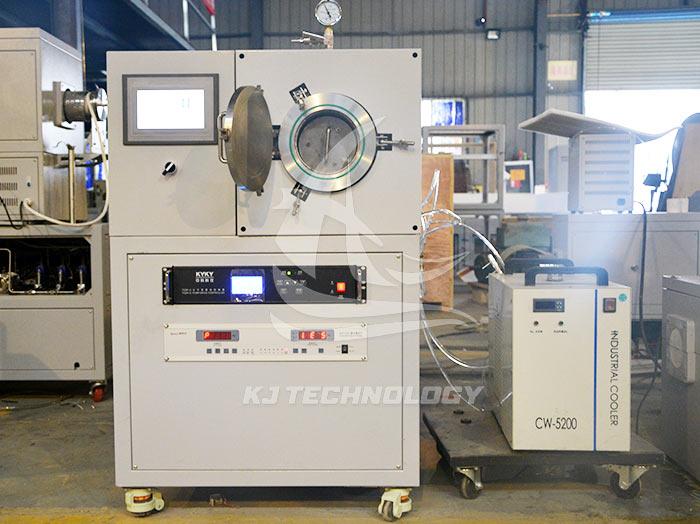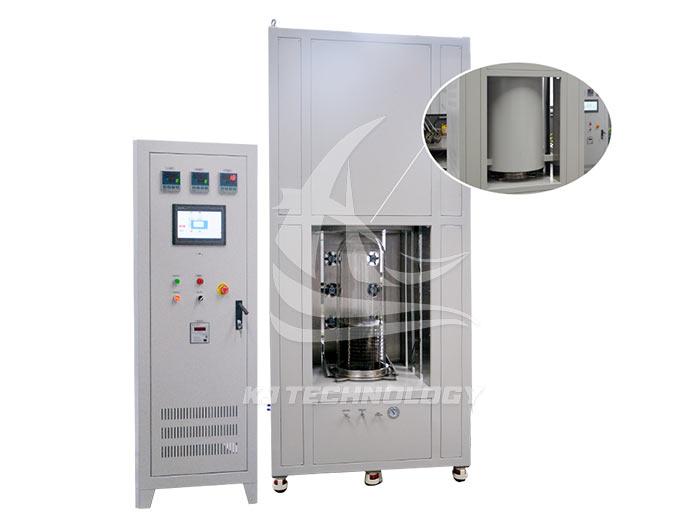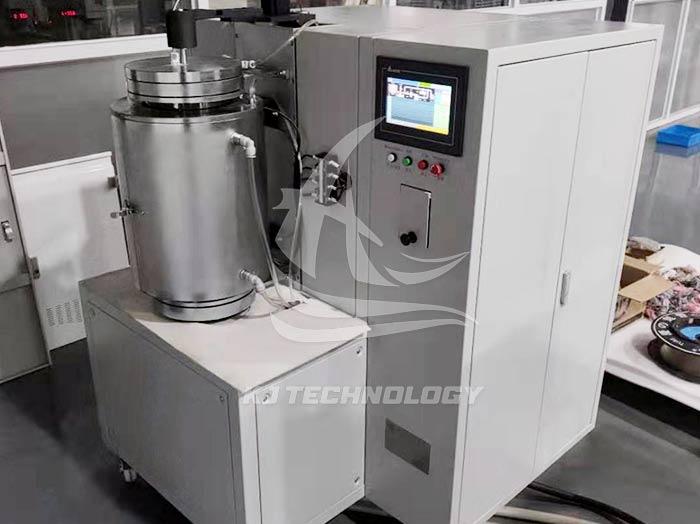Application of Vacuum Hot Pressing Furnace in Powder Metallurgy Industry
 07-07-2025 Author: KJ technology
07-07-2025 Author: KJ technology
In the powder metallurgy industry, the vacuum hot press furnace achieves the preparation of high-precision and high-performance materials through the synergistic effect of vacuum environment, high-temperature heating, and mechanical pressure. Its core applications and advantages can be summarized as follows:
1. Core application areas
Preparation of high-performance metal based composite materials
Typical materials: Aluminum based, titanium based composite materials (such as carbon fiber reinforced aluminum based composite materials).
Technological advantages:
Vacuum environment prevents metal oxidation, and pressure promotes uniform composite of metal and reinforcing phases (such as carbon fiber and ceramic particles);
The product combines high strength (tensile strength ≥ 800 MPa) and lightweight (density ≤ 3.0 g/cm ³), and is widely used in aerospace structural components, automotive connecting rods, etc.
Manufacturing of Hard Alloy Cutting Tools and Molds
Typical materials: tungsten cobalt alloy, tungsten carbide based hard alloy.
Technological advantages:
Hot pressing sintering at 1400-1450 ℃ and 20-30 MPa pressure results in a product density of over 99.5%, with significantly improved hardness (HRA ≥ 92) and wear resistance;
The service life is 30% -50% longer than traditional processes, suitable for high-precision rollers, cutting tools, etc.
Near net forming of powder metallurgy parts
Typical products: high-precision parts such as automotive gears, connecting rods, molds, etc.
Technological advantages:
Pressure promotes diffusion and bonding between powder particles, reduces subsequent processing volume, and increases material utilization by 40%;
The product density is close to the theoretical value, and its mechanical properties are superior to traditional forged parts.
Sintering of nanomaterials and special powders
Technical difficulties: nano powder is easy to agglomerate, and the grain is easy to coarsen during sintering.
Solution:
The vacuum hot pressing sintering temperature is 200-400 ℃ lower than atmospheric pressure, effectively suppressing grain growth;
Pressure promotes the thermoplastic flow of powder, achieving a fine grain structure (grain size ≤ 100 nm), and improving material strength and toughness.
Target preparation
Typical materials: refractory metal sputtering targets (such as tungsten, molybdenum), composite targets.
Technological advantages:
Powder metallurgy combined with vacuum hot pressing can prepare large-sized, high-density (≥ 99%) flat target materials;
Solving the problem of component uniformity that is difficult to achieve by melt casting has become the mainstream preparation method for magnetron sputtering targets.
2. Analysis of Technical Advantages
Inhibit grain growth and improve material properties
Vacuum environment reduces oxidation, pressure promotes metallurgical bonding between particles, lowers sintering temperature by 200-400 ℃, and avoids abnormal grain growth.
Case: Boron carbide ceramics were sintered by hot pressing at 2150 ℃ for 10 minutes, with a relative density of 91.6% and a room temperature Young's modulus of 292.5 GPa, which is much higher than the 80% -87% density sintered at normal pressure.
Realize complex shape forming
Powder materials have thermoplasticity at high temperatures and can be made into thin-walled tubes, spherical columns, and other shaped products, breaking through the shape limitations of traditional cold pressing processes.
Case: The hot pressing method can produce non bending long pieces and precisely sized hollow products, suitable for aerospace long structural parts.
Improve production efficiency and material utilization rate
Pressure accelerates the densification process, shortens sintering time, and reduces energy consumption;
Near net forming technology reduces machining volume and increases material utilization by over 40%.
Support the manufacturing of large-sized products
The unit pressing pressure of hot pressing is only one tenth of that of cold pressing, and the product size can be enlarged by welding. Currently, the weight of hard alloy products produced by hot pressing can reach tens to hundreds of kilograms.
3. Industry application cases
aerospace field
Application scenarios: High temperature resistant components such as turbine blades and combustion chamber liners.
Process effect: The vacuum hot pressing furnace forms at 1600-1800 ℃ and 50-100 MPa pressure, significantly improving the high-temperature strength (≥ 1000 MPa) and creep resistance of the material.
automotive industry
Application scenarios: high-precision parts such as connecting rods and gears.
Process effect: Near net forming technology reduces machining volume, achieves product dimensional accuracy of ± 0.05 mm, and reduces production costs by 30%.
Electronic industry
Application scenario: Preparation of magnetron sputtering target materials.
Process effect: The target material produced by vacuum hot pressing sintering has a density of ≥ 99% and a composition uniformity of ≤ 0.5%, meeting the requirements of semiconductor manufacturing.








